
Director's Report
In this issue of Environmental Currents, we explore a whole host of interesting topics ranging from our roots in American history to an appreciation of our native orchids and an update on our beautiful Penguin Court Preserve.
There is a lot going on at your Conservancy.
We're also looking forward to commemorating the 50th anniversary of the very first Earth Day this year, including with our annual Brandywine River Clean Up on April 18. Earth Day is officially celebrated on April 22, but, as the old slogan goes, it’s “Earth Day Every Day” at the Brandywine Conservancy. Our mission has its roots in preserving land, water and our cultural heritage . . . and it always will. So while we hope you'll join us in celebrating this glorious 50th anniversary of a grand ideal started with the first Earth Day, we also hope you will continue to give thanks for the Earth every day, including its beauty and natural resources that are ours to con-serve, protect and enjoy.
Best to you all,
Ellen
Ellen M. Ferretti
Director, Brandywine Conservancy
Hiking through History
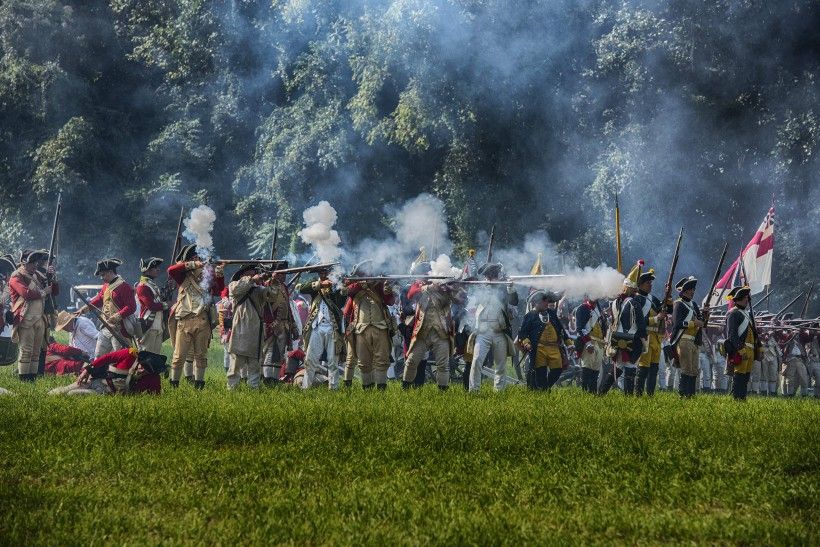
Coming soon, a new illustrative map designed by the Brandywine Conservancy will enable visitors to the Brandywine Valley region to explore the rich history of the American Revolutionary War’s Philadelphia Campaign of 1777 in addition to the area’s many cultural, recreational and natural attractions.

On September 11, 1777—a little over a year after the Declaration of Independence was signed—the Revolutionary War entered the Brandywine Valley landscape in a legendary conflict known as the Battle of Brandywine. It was the first major engagement of the British campaign to capture Philadelphia and the longest single-day battle of the Revolutionary War—as well as one of the largest in terms of combatants.
More than 200 years later, the impact of the Battle of Brandywine has left an indelible mark on the history and landscape of this region. Today, the historic battle lands consist of thousands of acres of preserved open space, publicly accessible trails and parks, as well as farms and residential developments along the Brandywine River in Chester and Delaware Counties. Of those protected open spaces, the Brandywine Conservancy has preserved 500 contiguous acres where some of the fiercest fighting transpired during the Battle of Brandywine, including its recent acquisition of Birmingham Hill—in the epicenter of the battle.
Available in early spring 2020, the Brandywine’s Hiking through History map will stretch across approximately 800 square-miles through Maryland, Delaware, Pennsylvania and New Jersey, tracing the entirety of the Philadelphia Campaign of 1777. The map will detail the troop movements and significant events, while also outlining overlapping recreational opportunities along the way.
The map will guide users as they hike, bike, drive and explore the region’s Revolutionary War history from Elkton, Maryland—where the British landed on August 25, 1777—to the capture of Philadelphia on September 26, 1777, and then northwards to the Valley Forge Encampment on December 19, 1777. Featured with the troop movements will be over 330 miles of regional multi-use trails and greenways, including portions of the 3,000-mile-long East Coast Greenway and the 196-mile Mason-Dixon Trail. More than 25 popular parks and preserves that offer local trails will also be included, from interpretive park locations such as the Brandywine Battlefield Park in Chadds Ford to Fort Mifflin in Philadelphia, Pennsylvania.

With the Hiking through History map, the Brandywine hopes to provide residents and visitors with a unique tool to experience the recreational opportunities in the Brandywine and Delaware Valley regions, while reliving the “boots on the ground” history of the Philadelphia Campaign of 1777 and enjoying the preserved landscapes that represent an important part of American history.
In addition to the map, the Conservancy will be working with Birmingham Township and six other municipalities this year to prepare the Brandywine Battlefield Heritage Interpretation Plan. The Plan will help determine the location, content and conceptual design of three Heritage Centers in the Battle of Brandywine National Historical Landmark and will identify routes that should be used by visitors to most effectively learn about aspects of the Battle of Brandywine. The Hiking through History map will complement these efforts and further activate this important historical site.
Hiking through History is a project of the Brandywine Creek Greenway, a regional planning initiative of the Brandywine Conservancy that envisions a 40-mile long conservation and recreation corridor from the City of Wilmington, Delaware to Honey Brook, Pennsylvania. Multiple partners aided the Brandywine Conservancy in the design and development of the map and brochure, including representatives from the Museum of the American Revolution, in Philadelphia, and the Chester County Planning Commission. Special thanks to the Brandywine’s Michele Gandy for her creative spark in coming up with the concept for this map. Hiking through History was made possible by the generous support of the William Penn Foundation.
Featured Subscriber: Chester County’s London Britain Township
This issue of Environmental Currents begins a new series that will highlight the successful planning and conservation activities of a subscribing municipality. Each issue will share stories of successful efforts by Subscribers within our region.
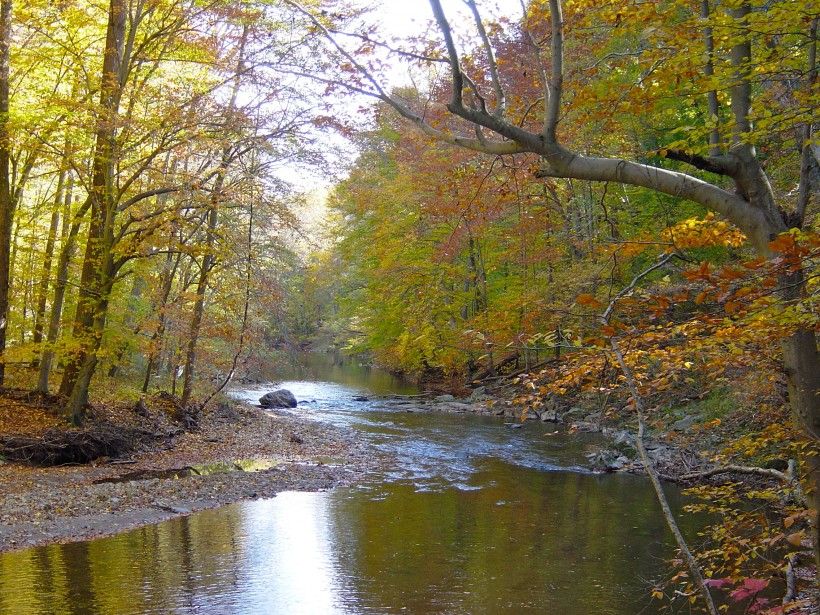
London Britain Township, located in southern Chester County, has been a member of the Brandywine Conservancy’s Municipal Subscriber Program for decades. This rural township is home to roughly 3,300 people and located in the heart of the White Clay Creek watershed. The eastern half of London Britain Township is shaped by the east and west branches of White Clay Creek, which have formed heavily wooded stream valleys, narrow floodplains and forested hillsides. The western half, particularly on both sides of PA 896 (New London Road) where it crosses the Township, is a more open landscape that supports traditional farming on highly productive prime farmland soils.
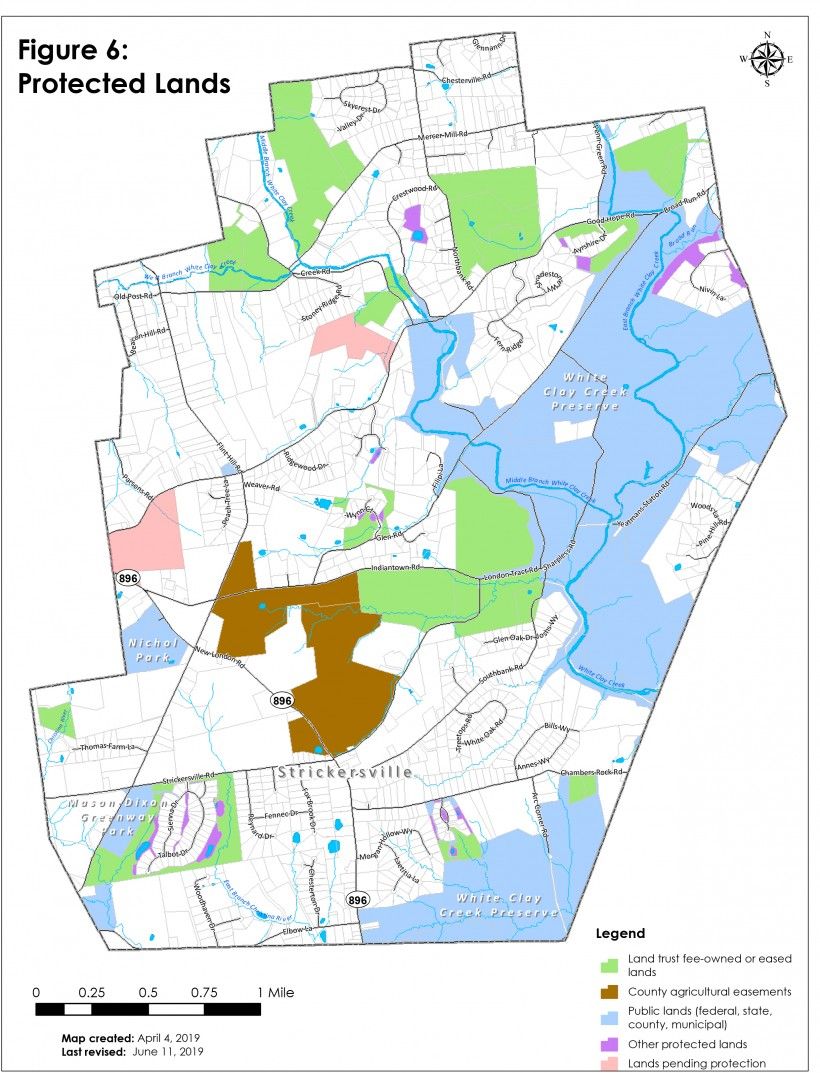
Over the years, London Britain Township officials have consistently and effectively sustained their unique blend of agricultural, natural and historic resources through comprehensive planning, using innovative zoning, subdivision, land conservation tools, and collaborating through successful partnerships. In 1999, for example, the Township formed its own Land Trust to work with landowners who might consider permanently preserving their lands. One year later, the Township's Board of Supervisors conducted a successful voter referendum for the establishment of an open space tax. Through use of revenue generated through this modest tax, the Board of Supervisors and its Land Trust now have 37% of its 6,267 acres in protected open space, placing them 12th out of Chester County’s 73 municipalities in total acreage protected.
Also in 2000, Township officials worked with neighboring municipalities—including the White Clay Creek Watershed Association, Congressional representatives and others—to obtain a Federal Wild & Scenic River designation for the White Clay Watershed. The Township has remained an active member of the Wild & Scenic River Management Committee. A more recent goal of Township officials and their constituents is the establishment of a natural greenway linking the unique, state-owned White Clay Creek Preserve in London Britain Township with the massive Fair Hill Natural Resources Management Area in northern Maryland. Through concerted efforts and generous landowner cooperation, the Township is now only one parcel and one road crossing away from realizing its greenway goal.
The Brandywine Conservancy has long partnered with London Britain Township officials, beginning with the preparation of their 1993 Open Space, Recreation and Environmental Resources Plan, and—most recently—helping them prepare their 2019 Comprehensive Plan Update. The Conservancy also prepared two Cost of Community Services Studies for the Township—one in 2006 to document the taxpayer value of the Township’s open space tax, and again in 2018 to confirm the continued taxpayer value of this conservation finance tool. The Conservancy has also helped the Township and its Land Trust with several successful land preservation transactions.
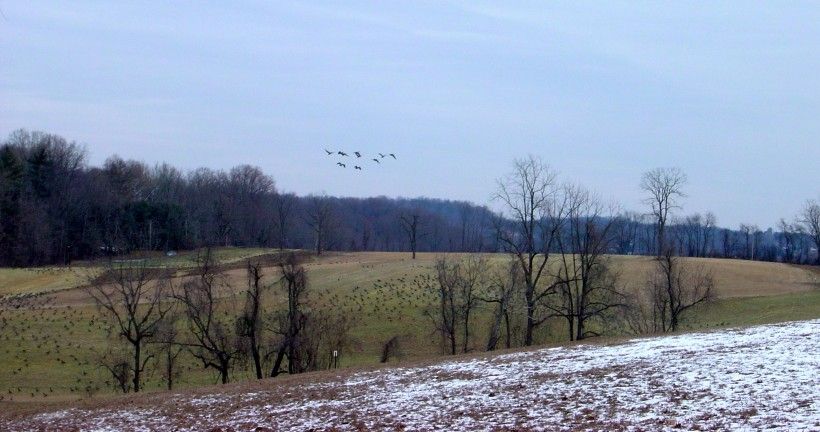
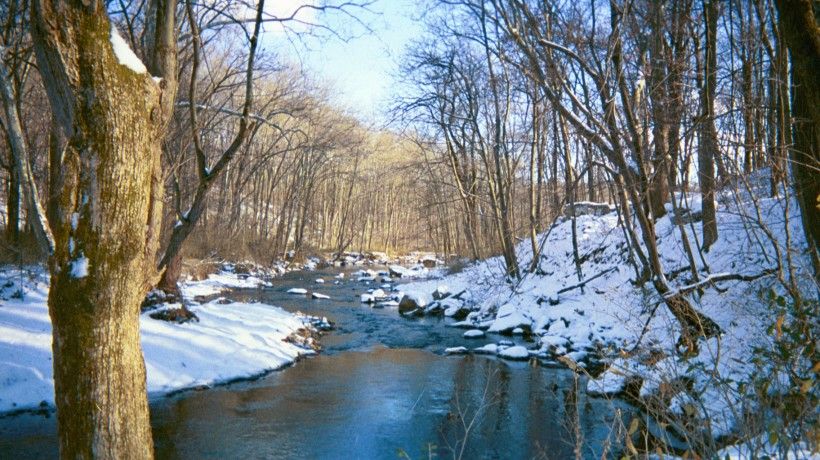
Like any other Pennsylvania municipality, London Britain Township is not without its challenges. For example, being rural means a limited tax base, yielding only modest annual revenue for use in maintaining Township roads, two municipal parks, a municipal trail network, and providing administrative and other basic services. However, the Township is blessed with numerous volunteers who apply their energy and expertise by actively serving on Township committees and the Township’s Land Trust. Through this extensive collective of conservation-minded volunteers and by relying on the help of many other County and non-profit partners, the Township will continue protecting its natural and historic resources and sustaining its rural and agrarian ways of life.
Upcoming Calendar of Events
Chalk Couture at Penguin Court
Monday, March 16
Town Hall Gathering: Birmingham Hill Preserve Master Plan
(Location: Visitor Center, Brandywine Battlefield Park)
Thursday, March 19
Laurels Preserve Trails Loop Hike
Sunday, March 22
Wildflower Walk at the Laurels Preserve
Saturday, April 11
Stewardship Series: Mira Lloyd Dock and Women in Conservation History
Monday, April 13
Wednesday Workshop at Penguin Court: Orchids
Wednesday, April 15
Project WILD Training Workshop at Penguin Court
Thursday, April 16
Stewardship Walk at the Laurels Preserve
Sunday, April 26
Tree Planting
Saturday, May 2
Wildflower, Native Plant & Seed Sale
Saturday, May 9–Sunday, May 10
Penguin Court & Ligonier Valley Historical Society’s Native Plant Sale
Saturday, May 9
90th Radnor Hunt Races
Saturday, May 16
Wednesday Workshop at Penguin Court: Succulents
Wednesday, May 20
Click here for all upcoming events.
In the Field: Spotlighting Local Land Preservation and Water Quality Efforts
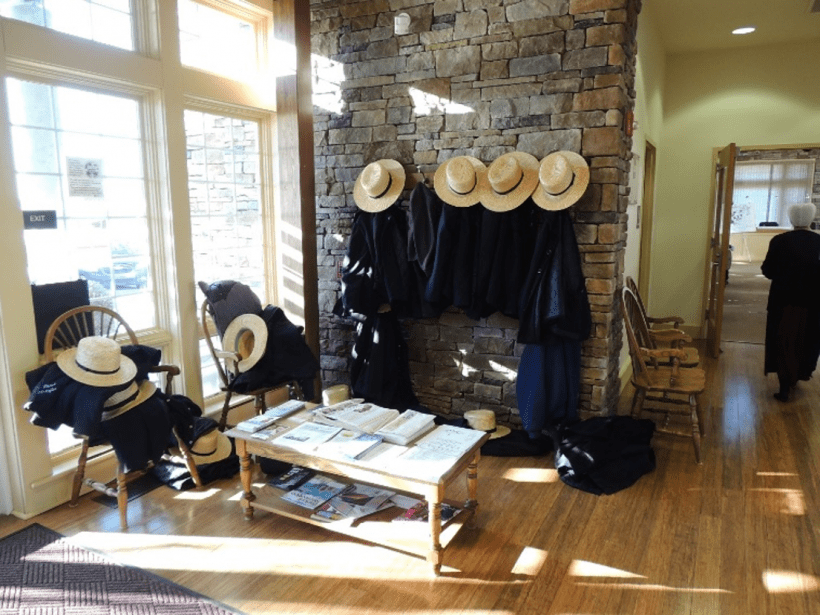
This past January the Conservancy staff held their annual breakfast with Honey Brook farmers at the top of the Brandywine watershed, where the east and west branches of the Brandywine begin. The day ended with an evening dinner with landowners in West Bradford Township, where the east and west branches of the Brandywine rejoin.
At both meetings, the dialogue was the same with a focus on land preservation and water quality. In both townships the Conservancy had assisted in a ballot measure to establish an earned income tax dedicated to paying landowners to preserve their land.
Honey Brook Township passed their open space referendum in 2006, and since then has increased their preserved lands from 6% to over 32% of the township. Most of these preserved farms are owned by Amish or Plain Sect families. Today, not only is a third of the Township preserved, but all of those farms have conservation plans that guide the farm’s operations to implement farming practices that retain valuable soils and protect the water quality flowing through the property.
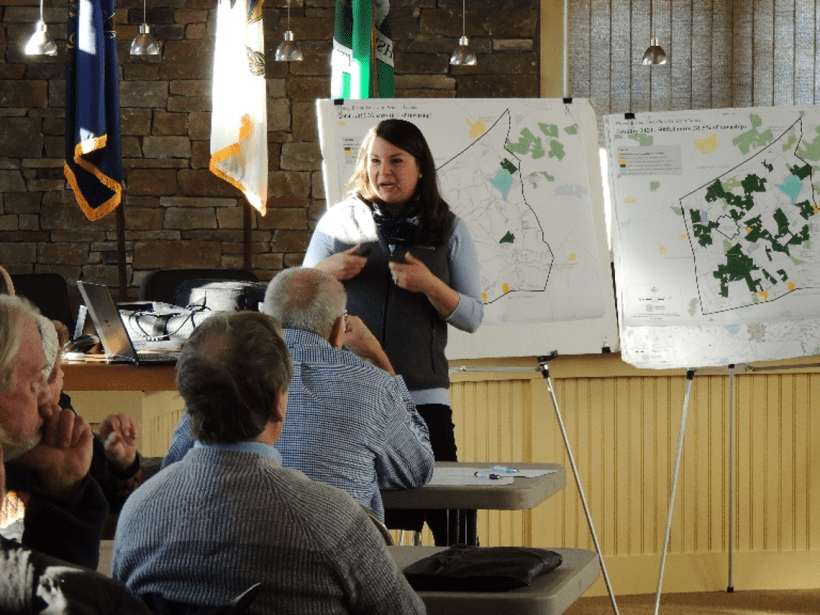
At the Honey Brook Breakfast, the Brandywine Conservancy’s Stephanie Armpriester presented the results of a township-wide farm survey that the Conservancy implemented to assess farming practices and the amount of best management practices the farmers are using. The results showed that Honey Brook Township farms have a 13% higher conservation plan rate than nearby geographies and implementation of those plans were 23% higher than other communities. These results show how working jointly with farmers through preservation and farm restoration work over the years has resulted in increased compliance numbers and higher water quality benefits.
In contrast to Honey Brook, West Bradford Township passed an open space ballot in 2017. Since then, they have hit the ground running and have already added 3% to their preserved farm total, resulting in 23% of the Township’s open space permanently protected. West Bradford Township is also blessed with being the caretaker of the Broad Run, an exceptional value watershed that begins and ends almost exclusively in the Township.
During the Conservancy’s evening dinner in West Bradford, landowners listened to two key speakers, including the Brandywine’s Rob Daniels who reviewed the Township’s new Open Space Plan. This plan is a blueprint for land preservation opportunities within the Township. The report also catalogues the different environmental agencies and programs available for the Township to partner with. The other speaker was Penn State Extension’s Meagan Hopkins-Doerr who discussed the invasive lanternfly and described control methods.
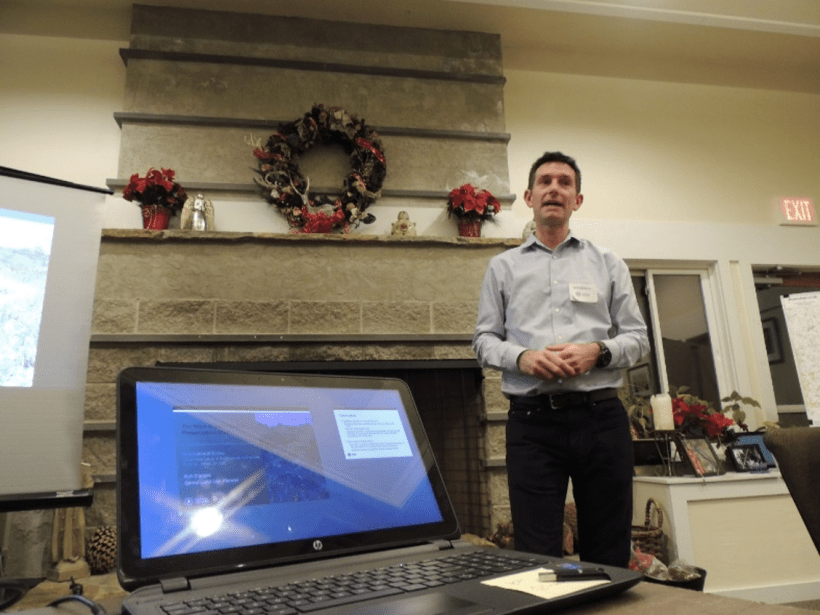
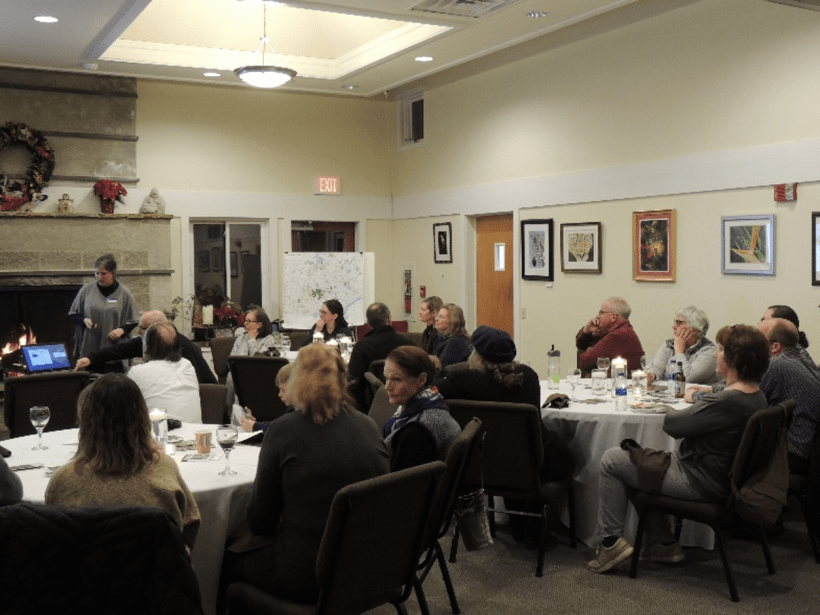
Brandywine Creek Greenway Expansion
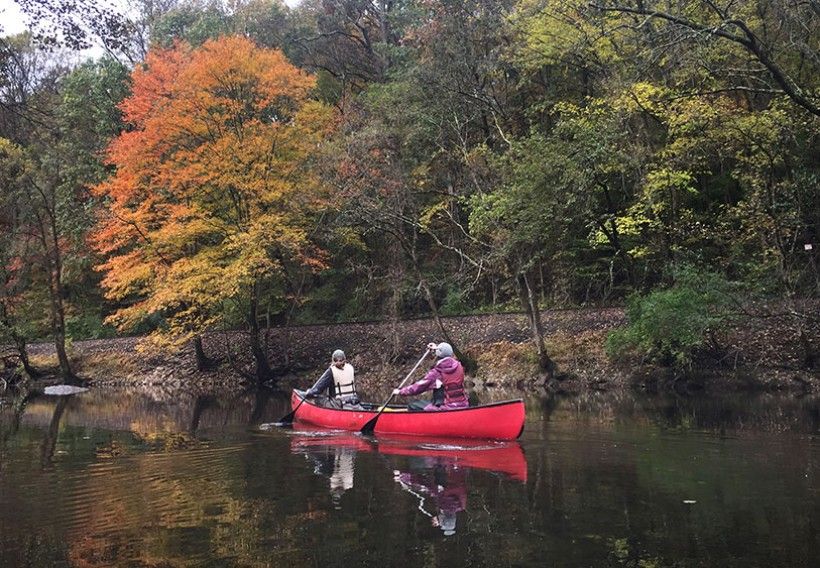
Have you heard the news? The Brandywine Creek Greenway, a regional planning initiative of the Brandywine Conservancy, has expanded into Delaware! Over the past few years, the Brandywine Conservancy and Delaware Greenways—in collaboration with a diverse group of municipal partners, state and regional agencies, and nonprofit organizations in New Castle County and the City of Wilmington—have been working together on this exciting project.
The Brandywine Creek Greenway is a conservation corridor, centered on the Brandywine and the lands around it. This regional initiative draws on past and present planning efforts to connect communities up and down the Brandywine, from its headwaters in Honey Brook Township, Pennsylvania, all the way to the City of Wilmington in Delaware, where the water meets the Christina and Delaware Rivers. As one collective, the Brandywine Creek Greenway helps further advance partners’ efforts to protect natural and historic resources, and to connect citizens with recreation opportunities on and along the Brandywine.
Interested in learning more about the Brandywine Creek Greenway in Delaware? Click here to view our recently published draft concept plan and map. This vision of the Greenway expansion into Delaware is based on partner input, community input, and analysis of natural, cultural and recreational resources and trails along the Brandywine in New Castle County and the City of Wilmington. Want to share your thoughts? We’d love to hear from you! Email the Brandywine Conservancy's Kathleen McCaig at [email protected].
Brandywine Creek Water Trail Feasibility Study
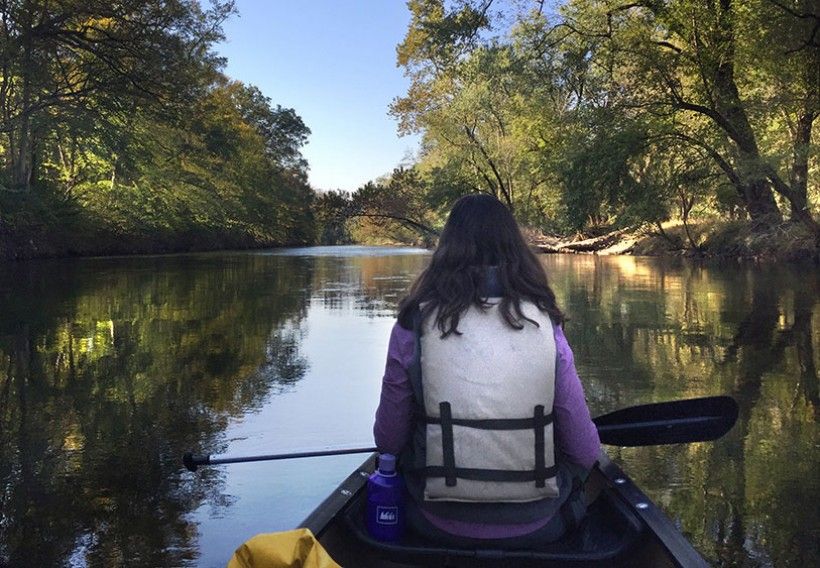
Click here to review the draft report and its appendices. You also will have the opportunity to provide input.
Racing for Open Space: The Radnor Hunt Races Celebrates its 90th Anniversary

Save the date! The Radnor Hunt Races return on Saturday, May 16, for an exciting day of steeplechase racing. Celebrating 90 wonderful years in 2020, this "Race for Open Space" is built on many traditions—thoroughbred horses at the peak of athleticism, beautiful horse-drawn carriages, dramatic flowered hats and families cheering along the rail. Above all else, the Races are supported by the legacy of protecting the stunning open spaces that make this region such a beautiful place to call home.
Since 1980, the Radnor Hunt Races have raised more than $5 million to support the Brandywine Conservancy's clean water and open space programs. With the help of the Races and many likeminded partners over the past 50 years, the Conservancy has protected over 66,000 acres of open space—including the Radnor Hunt racecourse itself and surrounding lands—and continues to improve and safeguard water quality, land protection, outdoor recreation and historic preservation in southeastern Pennsylvania and northern Delaware.
We hope you can join us for this exciting tradition in May! Click here to learn more about ticket options.
Invasive Species Spotlight: Foraging for Invasives
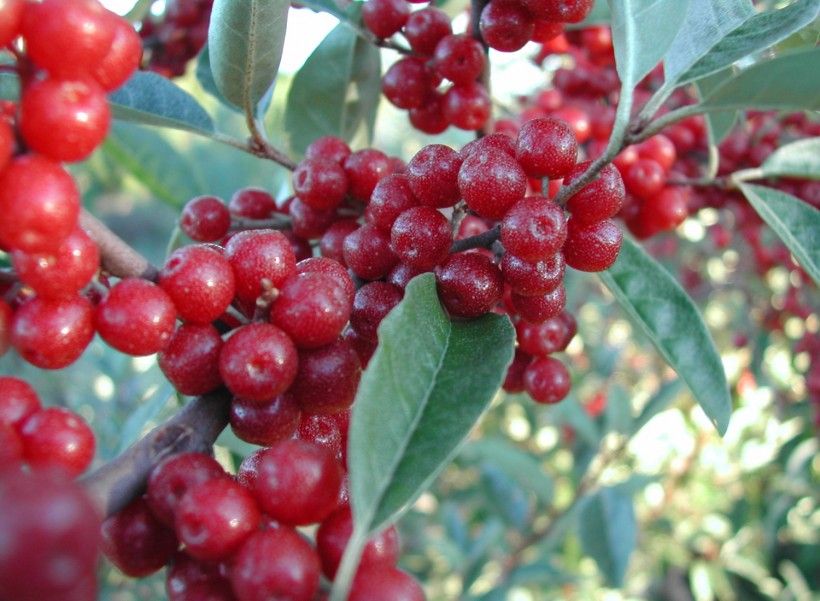
With the start of spring comes the beginning of another season of the never-ending battle between conservation warriors and the pesky invasive plant species that have taken over our ground. The U.S. Forest Service defines “invasive species” as those that are non-native to the ecosystem in question and whose introduction causes—or is likely to cause—economic or environmental harm or harm to human health.
While invasive species can be any kind of living organism, invasive plant species have become an all too common sight in our local landscape. These plants have an enormous negative impact on our natural resources. They are aggressive and multiply quickly, outcompeting native plants for sunlight, space and nutrients. They are also a major threat to the biodiversity of our landscape, giving native plants little chance of survival without the help of human intervention. The removal of invasive plants is a crucial step to the protection of our native landscape.
While there are many methods of dealing with unwanted plant species (which generally require an aggressive, hands-on approach to remove), some invasive plants are actually edible and can make great additions to recipes. Click here to learn more!
Penguin Court Celebrates Penguin Awareness Day with Local School District
January 20 marked the annual occasion of Penguin Awareness Day, which celebrates this flightless bird and brings awareness to their dwindling populations.

To honor its namesake, Penguin Court—a Preserve of Brandywine Conservancy— worked with the Ligonier Valley School District to celebrate the holiday with a day full of penguin-themed programs and activities.
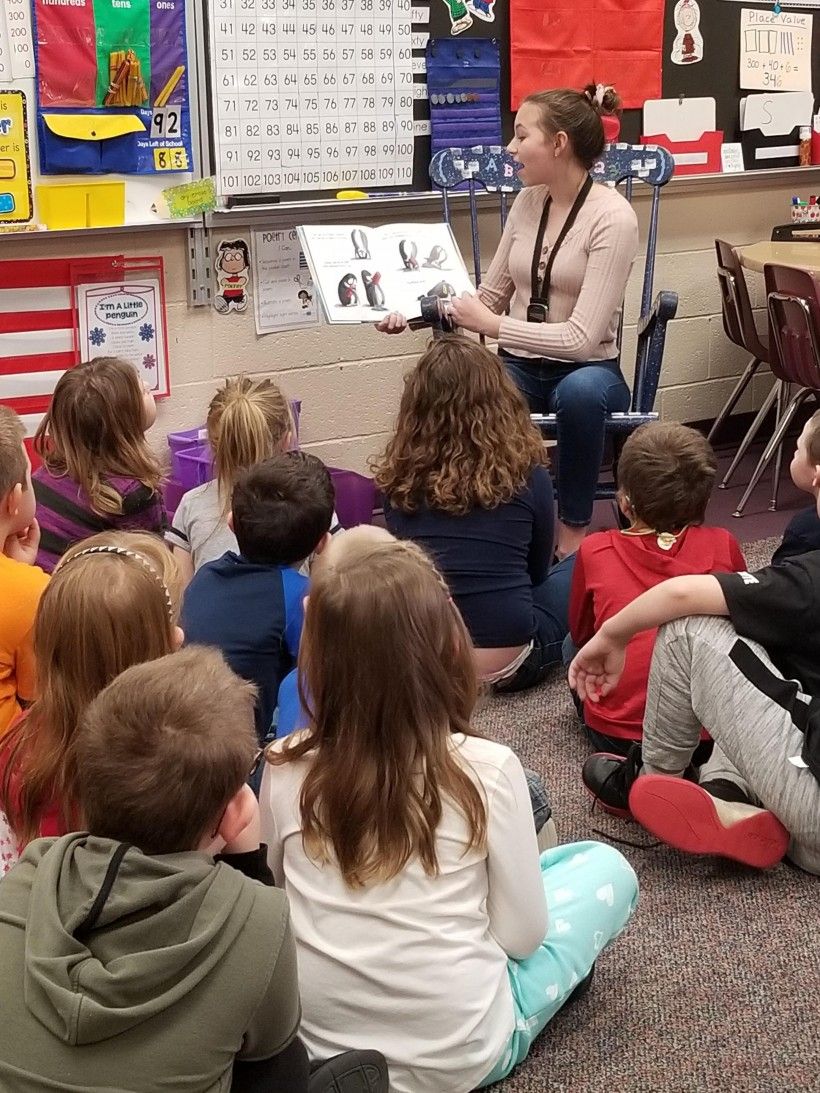
Guided by Penguin Court staff, a dozen 7-8th grade Ligonier Valley Middle School students helped facilitate four activities in the second-grade classrooms at R.K. Mellon Elementary School and in the first-grade classrooms at Laurel Valley Elementary School. The first- and second-grade students watched a short, educational video about penguins and then wrote one fun fact about what they learned—such as penguins can’t taste their food and swallow it whole—and then completed a fun penguin craft with the middle schoolers’ help. After sharing their favorite penguin facts, the young students listened to an interactive reading by the middle schoolers about a penguin with hiccups. A penguin-themed word search concluded the class.
“It was a joy watching the interactions of the middle and elementary school students,” noted the Brandywine’s Melissa Reckner, Penguin Court Program Manager. “The timing of Penguin Awareness Day nicely coincided with a unit about penguins that was being taught in the classrooms. We’re also excited to welcome the participating middle school students on an upcoming visit to Penguin Court to snowshoe—if winter blankets the property—or to go for a hike.”
Named by the Scaife family who built their country estate on the property, Penguin Court once had at least 10 African penguins on the property in the 1940s. Richard M. Scaife bequeathed Penguin Court to the Brandywine Conservancy, which took ownership in 2015. Today the Penguin Court Preserve is actively engaged in preserving the land and utilizing its resources for community benefit. Staff care for the grounds; grow native plants for wildlife habitat, biodiversity, restoration and education projects; and offer programming to support education, best management practices and the protection of the surrounding ecosystem.
Save the Date!
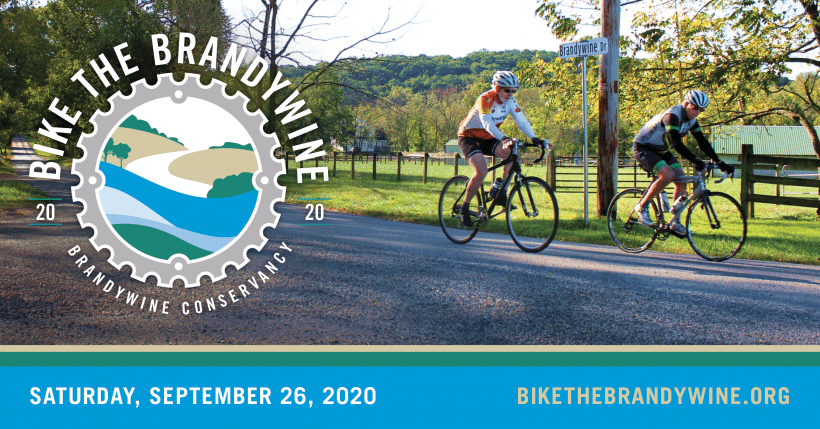
Save the Date for the 5th Annual Bike the Brandywine! Click here to learn more.